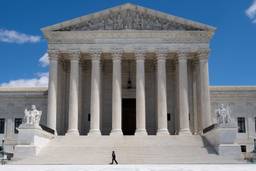Long Before Conservatives Stifled Gun and Tax Studies, They Derailed Labor Research
Moshe Z. Marvit

Just before the November election, news leaked that the Congressional Research Service had been strongarmed by Senate Republicans into withdrawing a report that analyzed the last six decades of economic data and found, contrary to deeply held Republican dogma, that there was no correlation between top marginal tax rates and economic growth. Six weeks later, after the Sandy Hook Elementary shooting, we were reminded that 15 years ago the National Rifle Association successfully lobbied to kill all federal funding of gun research, leaving the public without solid information with which to debate gun control.
Now, as House Majority Leader Eric Cantor has begun calling for an end to federal funding for social science research, Paul Krugman has labeled the modern GOP “the ignorance caucus.”
“These days [Cantor’s] party dislikes the whole idea of applying critical thinking and evidence to policy questions,” writes Krugman, who identifies an epistomelogical divide between the parties: “One side believes, at least in principle, in letting its policy views be shaped by facts; the other believes in suppressing the facts if they contradict its fixed beliefs.”
Krugman is right about the GOP’s ostrich policies, but he is incorrect in one respect: They are nothing new. The top-down suppression of research has been shaping U.S. history for decades, and it has been especially detrimental to unions.
The National Labor Relations Act (or Wagner Act) was exceptionally effective during its first five years in existence, from 1935 to 1940 — and during that time, much of the National Labor Relations Board’s work was accomplished by its investigative arm, the Division of Economic Research (DER).
In those five years, thousands of union elections were held in which the vast majority of eligible workers voted (most for unions); the number of union members consequently doubled to over nine million. The NLRB pushed hard against employers who violated the act, reinstating over 200,000 workers who were discriminatorily discharged or locked out between 1936-1939 alone.
According to Professor Robin Stryker, the Division of Economic Research was “integral to effective Wagner Act enforcement” in these early years. The DER uncovered the employer — and National Association of Manufacturing — plan to create “independent” unions that were really company-dominated unions; it provided important data to the NLRB regarding which cases and unfair labor practices should be targeted in order to best effectuate the act’s policies; and its economists served as experts in discrimination cases. According to the 1939 NLRB Annual Report, the work of the DER helped the Board determine what constituted an unfair labor practice, which was “especially difficult where employer opposition to labor organization and collective bargaining assumes subtle and devious forms.”
The DER also helped save the Wagner Act itself. In the 1937 Supreme Court case NLRB v. Jones & Laughlin Steel, the DER prepared an important report showing that employer practices were leading to industrial strife; the court surprised many by finding the Wagner Act constitutional.
The response of conservatives — including both Republicans and Southern Democrats — to the success of the DER was to declare that the NLRB economists were leading to industrial unrest rather than peace and to label its chief economist, David J. Saposs, a Communist. Representative Howard Smith, the famous anti-labor segregationist who used his position as Chairman of the Rules Committee to keep civil-rights legislation off the house floor, held hearings on the Board in 1940. Smith, a Virginia Democrat, subsequently introduced a bill to abolish the DER. The bill passed in 1940 and was then ratified in an amendment to the anti-labor Taft-Hartley Act of 1947. Therefore, even though, in the words of 1930s labor scholar David Ziskind, “every labor dispute is an economic phenomenon,” the Board was no longer permitted to engage in economic analysis.
This prohibition remains in the Wagner Act, and there is no economic division at the Board. To this day, the amended Section 4 of the NLRA prohibits the Board from hiring individuals “for the purpose of…economic analysis.”
Wilma Liebman, the former chair of the Labor Board, described this prohibition as crippling:
It makes the Board ill-equipped to modernize labor law doctrines in response to a changing economy, let alone to make informed decisions based on economic realities. By design or happenstance, this handicap effectively promotes the Board’s obsolescence. It is hard to imagine any other New Deal agency — such as the Securities and Exchange Commission or the Federal Communications Commission — operating without the ability to engage in economic research and analysis.
If Eric Cantor and others wish to see where a ban on federal funding for social science research will lead us, they need look no further than the Labor Board. It is tasked with setting the nation’s labor policy, and yet it must rely on the free market of corporate studies and academic journals to provide the Agency with the data and analysis necessary to fulfill its mandate.
Moshe Z. Marvit is an attorney and fellow with The Century Foundation and the co-author (with Richard Kahlenberg) of the book Why Labor Organizing Should be a Civil Right.








